How to fix E221 error on Samsung AC018BXADCH Air Conditioner?
- BBrian HillAug 17, 2025
To resolve the E221 error on your Samsung Air Conditioner, check the outdoor sensor for open or short circuits.
How to fix E221 error on Samsung AC018BXADCH Air Conditioner?
To resolve the E221 error on your Samsung Air Conditioner, check the outdoor sensor for open or short circuits.
How to troubleshoot E231 error on Samsung AC018BXADCH?
To troubleshoot the E231 error on your Samsung Air Conditioner, check the Cond-Out sensor for open or short circuits.
What to do if my Samsung AC018BXADCH shows E202 error?
If your Samsung Air Conditioner displays the E202 error, it is recommended to check the electrical connection and settings between the indoor and outdoor units.
What does E121 mean on my Samsung AC018BXADCH?
The E121 error code on your Samsung Air Conditioner indicates an issue with the indoor unit's room thermistor, specifically an open or short circuit. Check the room temperature sensor of the indoor unit to see if it is shorted or open.
What to do if my Samsung Air Conditioner shows error code E201?
If your Samsung Air Conditioner displays error code E201, it indicates a communication tracking failure after the initial power is supplied. The suggested solution is to check the indoor quantity setting in the outdoor unit.
What does E122 mean on a Samsung AC018BXADCH?
The error code E122 on your Samsung Air Conditioner indicates that the indoor unit EVA_IN thermistor is open or shorted. Check the EVA IN sensor of the indoor unit to determine if it is shorted or open.
What does E123 mean on my Samsung Air Conditioner?
The E123 error on your Samsung Air Conditioner means that the indoor unit EVA_OUT thermistor is either open or shorted. You should check the EVA OUT sensor of the indoor unit to see if it is shorted or open.
What does E153 mean on Samsung Air Conditioner?
The E153 error code on your Samsung Air Conditioner indicates that the indoor unit float switch is open or shorted, or there is a drain pump operation issue. Check the float switch for a second detection.
What does error E198 mean on Samsung AC018BXADCH Air Conditioner?
The E198 error code on your Samsung Air Conditioner indicates that the thermal fuse is open. You should check the indoor unit terminal block.
What to do if Samsung Air Conditioner displays E322 error?
If your Samsung Air Conditioner displays the E322 error, check the ESC OUT sensor for open or short circuits.
General service precautions for electrical parts, connections, and assembly.
Handling PCBs safely, avoiding static electricity, and customer repair warnings.
General safety warnings regarding power, wiring, outlets, and grounding.
Cautions related to gas release, frostbite, suffocation, and container handling.
Procedure for disassembling the panel and filter of 1way CST indoor units.
Continues indoor unit disassembly: purification control box cover, dust sensor, HVPS screws.
Continues indoor unit disassembly: step motor, hinges, sensors, guide air, and plate.
Procedure for disassembling the panel and filter of JSF-1,2 PANEL indoor units.
Continues panel disassembly: opening grille, separating clips, filter, cover screws, and panel.
Disassembly of electrical parts: removing screws, separating connectors from PCB, and electrical parts.
Disassembly of drain pump: removing screws, loosening band ring, separating drain hose and pump.
Disassembly of drain pump: removing screws from cover, holder fan, cross fan, and separating cross fan.
Procedure for disassembling the panel of 4way CST (AC***BN4DCH) indoor units.
Procedure for disassembling the panel of 4way CST (600x600) : AC***BNNDCH indoor units.
Continues panel disassembly: disassembling bolts, pressing hangers, and removing panel.
Disassembly of blade: removing hinge-blade and blade.
Disassembly of display PBA: removing cover display and cover PBA.
Continues display PBA disassembly: disconnecting connector wire, removing humidity sensor, and step motor.
Disassembly of control box: disconnecting connector wire, unscrewing screws, and separating control box.
Disassembly of bell-mouth: unscrewing and pushing bell-mouth to remove.
Continues evaporator disassembly: removing cover pipe screw, in/out pipe, and heat exchanger.
Procedure for disassembling the panel of 360 Cassette (AC***BN6DCH) indoor units.
Continues panel disassembly: rotating grille, removing safety clip, filter, and control box screws.
Continues control box disassembly: removing screws, pulling cover, and avoiding hooks.
Continues control box disassembly: separating connectors, ground screw, and top cover & drain pan screws.
Continues top cover/drain pan disassembly: pulling booster fan connector, removing screws, and pushing hook.
Continues top cover/drain pan disassembly: removing screws, pulling hook, and separating cover.
Disassembly of drain pump and hose: separating drain hose from pump.
Continues drain pump/hose disassembly: removing screws, separating drain hose, and fan motor/cross fan.
Disassembly of drain pan: Cabinet top evap, drain cushion.
Disassembly of evaporator: Cover pipe, support evap, refrigerant sensor, inlet air sensor, EEV wire, and evaporator.
Disassembly of heat exchanger: Purging refrigerant, unscrewing screws, separating pipes, separating heat exchanger.
Disassembly of motor & blower: Disconnecting motor wire, bracket motor, case blower top/out.
Disassembly of fan & motor: Taking fan propeller apart, unscrewing motor screws, separating motor wire connector.
Details on test operation modes and display indications, including error codes.
Details on version check and address setting procedures using the K4 push type.
Explains the self-diagnosis function (Auto check) for installation status and product integrity.
Lists indoor unit error codes and corresponding LED display patterns for 360 Cassette models.
Lists indoor unit error codes, their causes, measures, product operations, and diagnosis methods.
Lists abnormal conditions and LED lamp display patterns for 4way Cassette (600x600) models.
Lists abnormal conditions and LED lamp displays for 1way Cassette models.
Lists abnormal conditions and corresponding LED indicators for Home Duct and Duct S models.
Lists abnormal conditions and error codes for RAC (AC***BNADCH) models.
Lists abnormal conditions and error codes for RAC (AC***BNTDCH) models.
Lists abnormal conditions and LED display patterns for Console (AC***BNJDCH) models.
Continues abnormal conditions and LED display patterns for Console models, including EEPROM errors.
Troubleshooting steps for indoor temperature sensor error (E121), including flowchart and resistance table.
Troubleshooting steps for indoor heat exchanger sensor error (E122), including flowchart and resistance table.
Troubleshooting flowchart for indoor unit float sensor error (E153), including PCB checks and parts replacement.
Troubleshooting flowchart for indoor fan error (E154), checking motor connector, rotation, and voltage.
Troubleshooting steps for EEPROM circuit failure (E162), including checking assembly and soldering.
Troubleshooting flowchart for communication error (E202) between indoor and outdoor units.
Troubleshooting steps for whistling noise in low wind mode, focusing on fan and motor inspection.
Initial diagnosis steps for outdoor unit power not turning on, focusing on power connections and checks.
Continues diagnosis for outdoor unit power issues, checking power parts and fan motor.
Troubleshooting flowchart for indoor/outdoor communication error (E202).
Details on communication IC and TVS-Diode measurement for E202 error.
Troubleshooting flowchart for communication error (E203) between outdoor unit INV and MAIN MICOM.
Troubleshooting for outdoor sensor errors (E221, E231, E251, E320), including resistance value tables.
Troubleshooting flowchart for compressor down due to freezing control (E403).
Troubleshooting flowchart for pipe blockage error (E422), including checks for valves, piping, and EEV.
Troubleshooting flowchart for outdoor unit fan error (E458, E475), checking power, connectors, and fan motor.
Troubleshooting for compressor starting/rotation errors (E461, E467), checking power, wiring, and noise.
Continues compressor error troubleshooting, checking wire assembly and PCB replacement.
Troubleshooting flowchart for full current/PFC over-current errors (E462, E484).
Troubleshooting flowchart for IPM (Over Current) error (E464), checking installation and wiring.
Continues IPM error troubleshooting, checking compressor wire assembly and PCB replacement.
Troubleshooting for DC LINK errors (E466, E483, E488), checking power, reactor, and fuses.
Continues DC LINK error troubleshooting, checking terminal block and power terminal box connections.
Troubleshooting flowchart for gas leakage error (E554), checking installation, valves, and refrigerant.
Continues gas leakage error troubleshooting, checking wiring, pipes, and replacing PCB.
| Brand | Samsung |
|---|---|
| Model | AC018BXADCH |
| Category | Air Conditioner |
| Language | English |




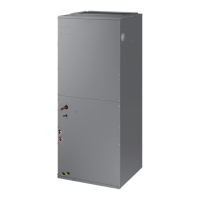
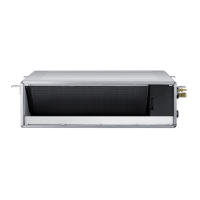



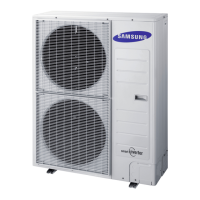
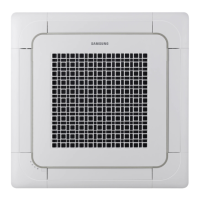
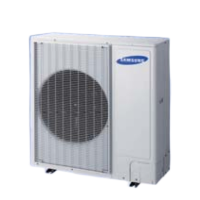
